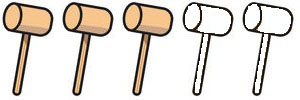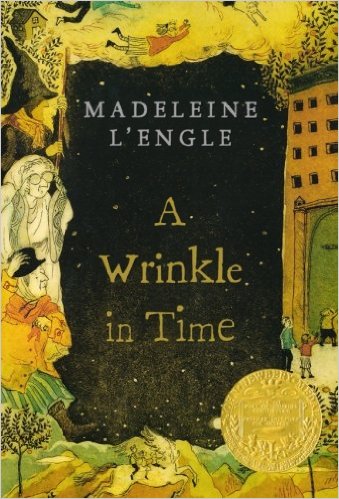Introduction
Title: A Wrinkle in Time (Time Quintet #1)
Author: Madeleine L’Engle
Genre: Science Fiction
Release Date: 1963
Synopsis (from Amazon):
It was a dark and stormy night; Meg Murry, her small brother Charles Wallace, and her mother had come down to the kitchen for a midnight snack when they were upset by the arrival of a most disturbing stranger.
“Wild nights are my glory,” the unearthly stranger told them. “I just got caught in a downdraft and blown off course. Let me sit down for a moment, and then I’ll be on my way. Speaking of ways, by the way, there is such a thing as a tesseract.”
A tesseract (in case the reader doesn’t know) is a wrinkle in time. To tell more would rob the reader of the enjoyment of Miss L’Engle’s unusual book. A Wrinkle in Time, winner of the Newbery Medal in 1963, is the story of the adventures in space and time of Meg, Charles Wallace, and Calvin O’Keefe (athlete, student, and one of the most popular boys in high school). They are in search of Meg’s father, a scientist who disappeared while engaged in secret work for the government on the tesseract problem.
A Wrinkle in Time is the winner of the 1963 Newbery Medal.
Why I Think Boys May Enjoy This
I’m actually kind of torn here. This book is a classic and one of the earliest examples of science fiction targeted toward young readers that I am aware of. It scores a lot of points for that. However, as a person who had never read this book as a youth myself, I got to read through this book without any nostalgia classes to gloss over the actual story. That being said, the first half of this book (before the Mrses. Missuses? Three weird ladies?) is extremely slow and I can see why my eldest child got bored of it last year before getting to the fun parts! (eg, the actual space/time travel).
Of course, L’Engle had to worldbuild some and set up the mystery of Mr. Murry’s disappearance and all the fun science-y parts and the oddness of Charles Wallace and the completely random appearance/connection of Calvin O’Keefe, but the entire first half was like trudging through exposition and seemingly random connections to get to the fun part. Once we do, though, we are treated to an awesome adventure that spans multiple planets with fantastic creatures and an awesomely mysterious big bad in the hive mind collective known as IT.
I often have to give benefit of the doubt in remembering that this book was published in 1963 to see how cool some of the concepts are and how revolutionary some of L’Engle’s ideas were. The “hive mind” concept, at the time, was pretty unique. To a modern kid, though, it’s not all that uncommon (we live in a Post-Borg world now). Also, some of the SciFi concepts of the era are outdated even to today’s standards and modern kids wouldn’t necessarily understand the concept of a computer taking up an entire room, for example. This is a pitfall of a lot of SciFi, I think, though and shouldn’t be considered a knock on this book.
I think the payoff for the wait in the earlier portion of the book is well worth a read though and this book is a safe and easy way to introduce a youngster to science fiction, but at the same time I can understand why something newer and more modern would appeal more to a kid today. It’s hard to have the wonder and awe that encapsulates science fiction when modern technology already supersedes the fantastical technology of the story you’re reading. I enjoyed the book, but I think it gets a lot of credit for being a “first” and there are probably better examples written since.
Content/Appropriateness
As expected for a former Newbery winner, this book is more than appropriate for young readers (hence why it lands on middle school summer reading lists across the country). There is nothing content-wise that would keep away even the youngest of readers. There are some random insertions of religious concepts (like guardian angels and prayer-esque chants), but that is unsurprising for a book from the 60’s. It’s not a “problem” per se but further shows how the book was written in a vastly different time than we live in currently.
Rating

Buy Links
Amazon | Barnes & Noble | IndieBound | iBooks | Google Play | Kobo









